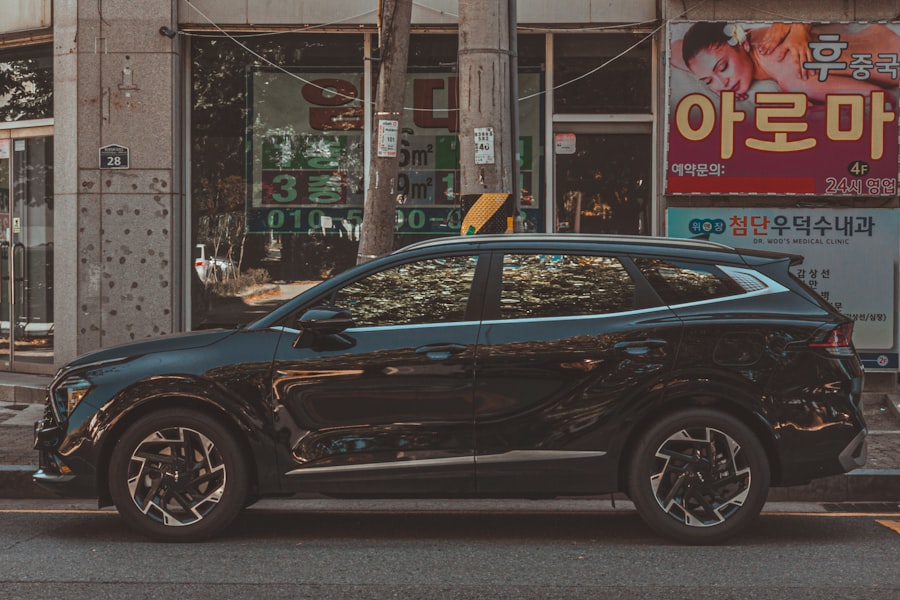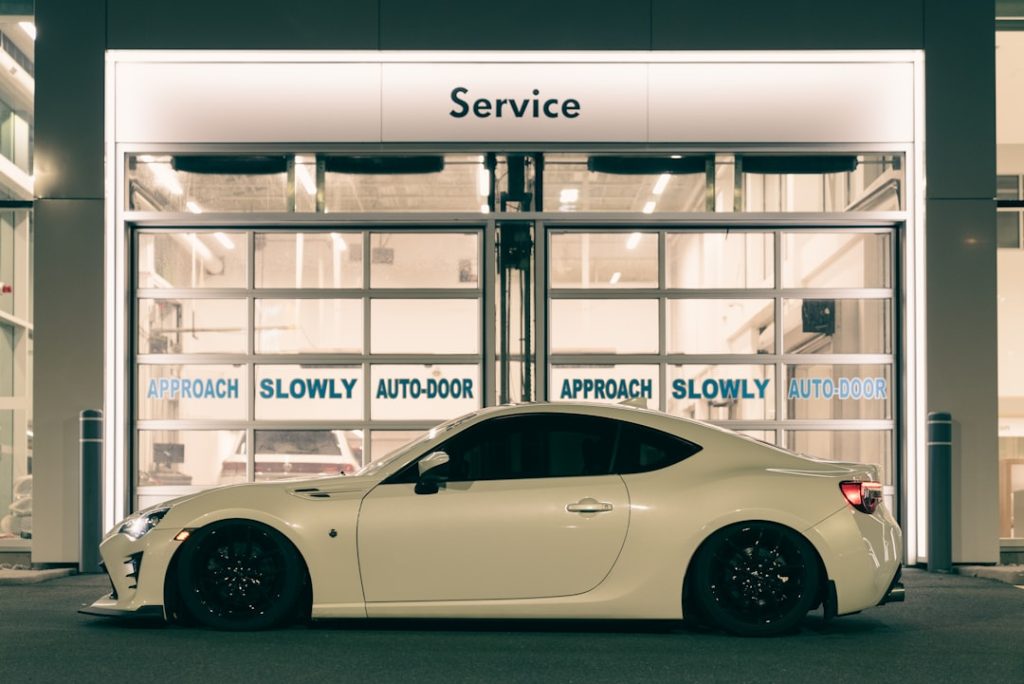The automotive industry has undergone a significant transformation in recent years, with a marked shift from traditional marketing methods to digital marketing strategies. This evolution is largely driven by changing consumer behaviors and the increasing reliance on technology in everyday life. As more consumers turn to the internet for information, research, and purchasing decisions, car dealerships have recognized the necessity of establishing a robust online presence.
This shift is not merely a trend; it represents a fundamental change in how businesses interact with their customers. Digital marketing encompasses a wide array of strategies, including search engine optimization (SEO), pay-per-click advertising, content marketing, and social media engagement. Each of these components plays a crucial role in reaching potential customers where they spend most of their time—online.
For instance, SEO helps dealerships improve their visibility on search engines, ensuring that when potential buyers search for vehicles or services, they encounter the dealership’s website prominently in the results. This visibility is essential in a competitive market where consumers are bombarded with options.
Key Takeaways
- Digital marketing is transforming how car dealerships reach and engage customers.
- Social media platforms are essential for building customer relationships and brand loyalty.
- Personalized marketing enhances customer experience and increases conversion rates.
- Data analytics enables precise targeting and more effective advertising campaigns.
- AI, automation, and virtual tools are shaping the future of car dealership marketing.
Utilizing Social Media for Customer Engagement
Social media platforms have emerged as powerful tools for car dealerships to engage with customers and foster relationships. Platforms such as Facebook, Instagram, Twitter, and TikTok allow dealerships to showcase their inventory, share promotions, and connect with their audience in real-time. The interactive nature of social media enables dealerships to respond to inquiries, address concerns, and gather feedback directly from customers, creating a two-way communication channel that was previously unavailable in traditional marketing.
Moreover, social media provides an opportunity for dealerships to humanize their brand. By sharing behind-the-scenes content, employee spotlights, and customer testimonials, dealerships can create a relatable image that resonates with potential buyers. For example, a dealership might post a video of a satisfied customer picking up their new car, capturing the excitement of the moment.
Such content not only showcases the dealership’s offerings but also builds an emotional connection with the audience, making them more likely to consider that dealership when making a purchase decision.
Implementing Personalized Marketing Strategies

Personalization has become a cornerstone of effective marketing strategies across various industries, and the automotive sector is no exception. By leveraging customer data and insights, dealerships can tailor their marketing efforts to meet the specific needs and preferences of individual consumers. This approach not only enhances the customer experience but also increases the likelihood of conversion.
For instance, utilizing customer relationship management (CRM) systems allows dealerships to track customer interactions and preferences over time. If a customer has previously shown interest in electric vehicles, targeted email campaigns can be designed to highlight new electric models or special promotions related to eco-friendly cars. Additionally, personalized recommendations based on browsing history can be integrated into the dealership’s website, guiding customers toward vehicles that align with their interests.
This level of personalization fosters a sense of value and attention that can significantly influence purchasing decisions.
Leveraging Data Analytics for Targeted Advertising
| Metric | Description | Example Value | Impact on Targeted Advertising |
|---|---|---|---|
| Click-Through Rate (CTR) | Percentage of users who click on an ad after seeing it | 3.5% | Higher CTR indicates more effective targeting and ad relevance |
| Conversion Rate | Percentage of users who complete a desired action after clicking an ad | 7.2% | Measures the success of targeted ads in driving sales or sign-ups |
| Customer Segmentation Accuracy | Degree to which data analytics correctly groups customers by behavior or demographics | 85% | Improves personalization and relevance of advertising messages |
| Cost Per Acquisition (CPA) | Average cost to acquire a customer through targeted ads | 12.50 | Lower CPA indicates more efficient use of advertising budget |
| Return on Ad Spend (ROAS) | Revenue generated for every unit spent on advertising | 4.3 | Higher ROAS reflects better targeting and campaign effectiveness |
| Audience Reach | Number of unique users exposed to the targeted ads | 1,200,000 | Ensures ads are delivered to a sufficiently large and relevant audience |
| Engagement Rate | Percentage of users interacting with ads beyond clicks (likes, shares, comments) | 5.8% | Indicates deeper user interest and potential brand loyalty |
Data analytics has revolutionized how car dealerships approach advertising by enabling them to target specific demographics with precision. By analyzing consumer behavior, preferences, and purchasing patterns, dealerships can create highly targeted advertising campaigns that resonate with their intended audience. This data-driven approach not only maximizes marketing budgets but also enhances the effectiveness of advertising efforts.
For example, using tools like Google Analytics and social media insights, dealerships can identify which demographics are most likely to engage with their ads. If data reveals that younger consumers are more responsive to certain types of content or promotions, dealerships can adjust their advertising strategies accordingly. Additionally, retargeting campaigns can be implemented to reach users who have previously visited the dealership’s website but did not complete a purchase.
By serving tailored ads to these potential customers, dealerships can remind them of their interest and encourage them to return.
Embracing Virtual Showrooms and Test Drives
The rise of virtual technology has opened new avenues for car dealerships to showcase their inventory and enhance the customer experience. Virtual showrooms allow potential buyers to explore vehicles from the comfort of their homes, providing an immersive experience that traditional showrooms cannot match. Through 360-degree views and interactive features, customers can examine every detail of a vehicle without stepping foot in a physical location.
Moreover, virtual test drives have gained traction as an innovative way for consumers to experience vehicles before making a purchase decision. By utilizing augmented reality (AR) or virtual reality (VR) technology, dealerships can offer simulated test drives that allow customers to experience the feel of driving a car without leaving their homes. This not only saves time for both parties but also caters to consumers who may be hesitant to visit multiple dealerships in person due to time constraints or health concerns.
Creating Seamless Online Purchasing Experiences

As consumer expectations evolve, so too must the purchasing process for car dealerships. A seamless online purchasing experience is no longer just an advantage; it has become a necessity in today’s digital landscape. Dealerships must streamline their online sales processes to ensure that customers can easily navigate from vehicle selection to final purchase without encountering unnecessary hurdles.
Implementing user-friendly websites with intuitive navigation is crucial for enhancing the online buying experience. Features such as online financing applications, trade-in estimators, and clear pricing information empower customers to make informed decisions without feeling overwhelmed. Additionally, offering live chat support can provide immediate assistance for any questions or concerns that may arise during the purchasing process.
By prioritizing convenience and transparency, dealerships can significantly improve customer satisfaction and increase conversion rates.
Building Trust and Transparency through Online Reviews and Ratings
In an age where online reviews hold significant weight in consumer decision-making, building trust and transparency is paramount for car dealerships. Potential buyers often turn to platforms like Google Reviews, Yelp, and social media to gauge the reputation of a dealership before making a purchase. Therefore, actively managing online reviews and responding to customer feedback is essential for establishing credibility.
Encouraging satisfied customers to leave positive reviews can bolster a dealership’s reputation and attract new buyers. Additionally, addressing negative reviews promptly and professionally demonstrates a commitment to customer satisfaction and accountability. For instance, if a customer expresses dissatisfaction with their experience, responding publicly with an offer to resolve the issue can showcase the dealership’s dedication to service excellence.
This proactive approach not only mitigates potential damage from negative feedback but also reinforces trust among prospective buyers.
The Future of Car Dealership Marketing: AI and Automation
As technology continues to advance at an unprecedented pace, artificial intelligence (AI) and automation are poised to play pivotal roles in the future of car dealership marketing. AI-driven tools can analyze vast amounts of data to identify trends and consumer preferences more accurately than ever before. This capability allows dealerships to refine their marketing strategies continuously and stay ahead of the competition.
Automation also streamlines various aspects of marketing operations, from email campaigns to social media posting schedules. For instance, automated email marketing systems can send personalized messages based on customer behavior or milestones—such as service reminders or anniversary messages for vehicle purchases—ensuring that communication remains relevant and timely. Furthermore, chatbots powered by AI can provide instant responses to customer inquiries on websites or social media platforms, enhancing engagement while freeing up staff time for more complex tasks.
In conclusion, the integration of AI and automation into car dealership marketing strategies will not only enhance efficiency but also enable more personalized interactions with customers. As these technologies continue to evolve, they will undoubtedly shape the future landscape of automotive marketing, creating opportunities for innovation and growth within the industry.




